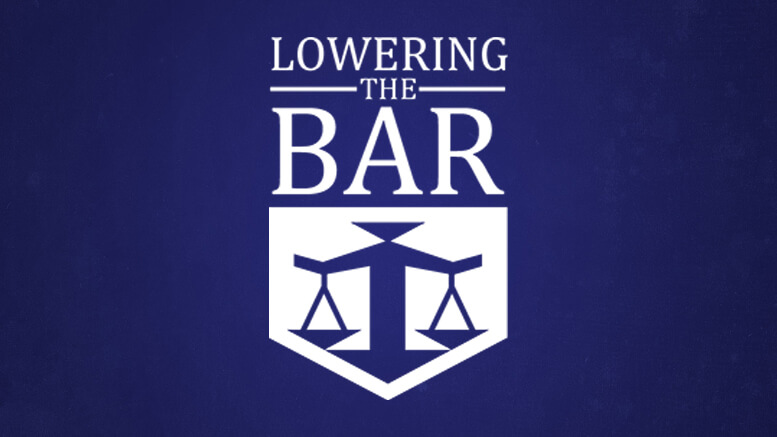The TTABlog, which covers actions by the Trademark Trial and Appeal Board, noted in March that that the TTAB had refused to allow registration of the "Cuffs & Collar" mark used by Chippendales. The TTAB ruled that the mark was not inherently distinctive for "adult entertainment services, namely exotic dancing for women in the nature of live performances."
 The mark (shown here as it appears in the application, not on stage), is apparently already registered based on a claim of acquired distinctiveness under Trademark Act Section 2(f). The question here was whether the mark is in fact "inherently distinctive" so that it could be registered without reliance on Section 2(f). I assume this makes some sort of difference under trademark law, but frankly I've already said more than I'm qualified to say about trademark law.
The mark (shown here as it appears in the application, not on stage), is apparently already registered based on a claim of acquired distinctiveness under Trademark Act Section 2(f). The question here was whether the mark is in fact "inherently distinctive" so that it could be registered without reliance on Section 2(f). I assume this makes some sort of difference under trademark law, but frankly I've already said more than I'm qualified to say about trademark law.
So, is it inherently distinctive? The Examining Attorney, who had decided it was not, argued that "'uniforms' of the general type at issue here are neither unusual nor inherently distinctive," as they more or less involve not wearing very much:
The Examining Attorney [who had clearly done his research] points out that exotic dancers often start a show wearing some kind of outfits, for example, a stripper representing either a doctor wearing a stethoscope, or a construction worker wearing a utility belt, or a cowboy wearing chaps and a ten-gallon hat.
And not much else. Agreeing with the examiner, the Board discounted the testimony of Dr. Rachel Shteir, a professor at DePaul University offered by Chippendales as an expert in draumaturgy:
In her declaration [the Board noted], she provides interesting history and psychosocial analysis in fields as diverse as the origins of the tuxedo, the significance of striptease, the women's liberation movement, the symbolic impact of costumes and uniforms, and other fields. Unfortunately, we find that her expertise and analysis ultimately have little probative value in relation to the question at hand . . . .
In her analysis Dr. Shteir points to Mary Poppins as the quintessential “iconic character” and to her umbrella as an “intrinsic symbol” of that character. Dr. Shteir states, “Thus, just as the attributes of Mary Poppins are transferred to her umbrella, so, too, the fantasy attributes of the Chippendales dancer were transferred to the Cuffs and Collar outfit worn by the Chippendales dancers. . . ." We fail to see how the comparison of Mary Poppins with the Chippendales supports applicant's position.
Despite this valiant attempt at a Mary Poppins/stripper analogy, the Board found that the mark was not inherently distinctive.
A dissenting opinion accepted most of Dr. Shteir's testimony, and would have found the clothing at issue "analogous to the garb of iconic characters, such as the blue tights and red cape of Superman, that taken together represents the power to leap tall buildings in a single bound."
Link: The TTABlog®
Link: In re Chippendales USA, Inc., No. 78666598 (Mar. 25, 2009).
